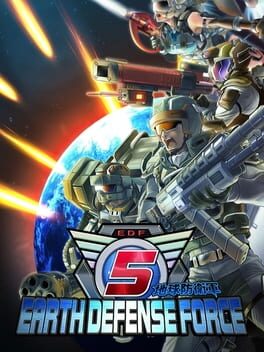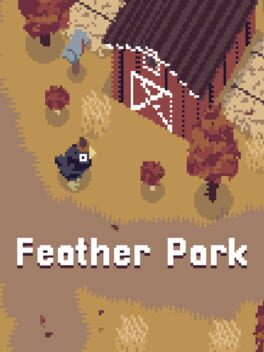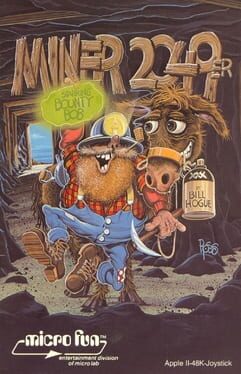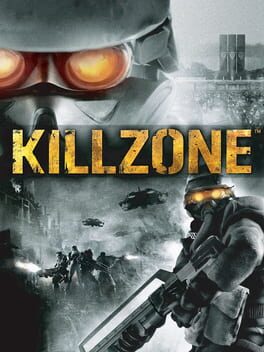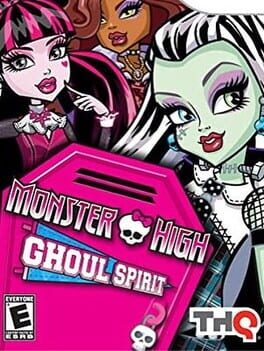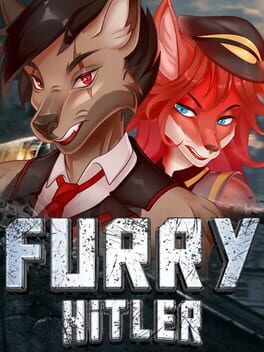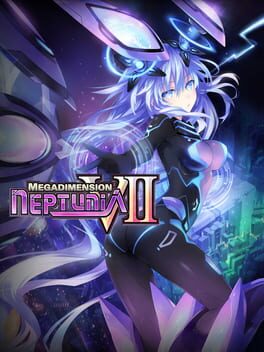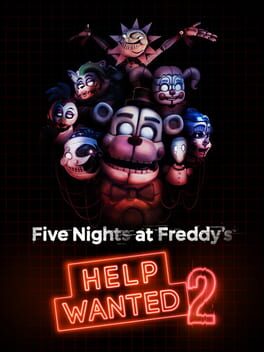Warisarcy
19 reviews liked by Warisarcy
Feather Park
2022
If a review is a reflection of one's experience with a game, then it only makes sense that my review of Feather Park is a retrospective of my role on it as the sole composer and sound designer.
Since 2012, my raison d'etre was "I want to write music for video games!", and despite hanging around hobbyist circles around it for years, I never really had a real finished game to my name. I could name multiple factors - mental health, poor family life, most likely undiagnosed conditions, so on - but I've watched friends, acquaintances and strangers start from the same sort of place I began at and move on to do the very gigs I would have dreamed to score.
It always crushed me, and I'd be lying if I said I've overcome it for good with this one game. Still, the fact that I can say with complete integrity that "I wrote music for a game!" means a lot to me, as does the fact that Feather Park was the first thing to really break me out of my shell, my mental blockade of not being able to write and complete original music since my last gig, one October ago.
I'll get the gameplay out of the way first. It's a simple game jam game made in two weeks for the 2022 Cozy Autumn Game Jam - you explore a simple overworld (about eight screens), control this hat-wearing bird around to meet other animals, play their minigames or solve miscellaneous tasks to cheer them up and make friends with them. There's no text, and everything's conveyed through audiovisual context, meaning that my role as sound designer was probably a tiny bit more important than usual.
The rock-paper-scissors minigame, for example: you're supposed to figure out which the other animal is going to choose, then deliberately lose to them and give them the win.
With the deadline looming ahead of me (I'd put off sound effects for the most part until the last day of the jam) and reusing sound effects across multiple contexts being the only seemingly viable way to get everything done, maybe it was a little ham-fisted that I gave a stereotypical "incorrect" sound effect for when you, the player, win the game of rock-paper-scissors. Or maybe it's not, and maybe it was helpful that I laid it on thick that actually, winning against this creature is a bad thing.
There aren't any real answers when it comes to sound design, I think - just personal opinions and justifications on how you think your opinions will impact others' experiences. That open-endedness definitely stumped me for a lot of the more abstract sound effects: how do you represent a heart icon popping up, for example?
Music being my primary avenue, not sound, I ended up representing most of the abstract sound effects with musical elements - a jingle on mallet percussions for the heart icon, a guitar slide for question mark popups, and so on. I tend to do this kind of psuedo-Mickey Mousing a lot (my original plan was to have the main character's footsteps sync in time with the music to play a little xylophone sound, but it was too complicated), and it worked out for a silly, cozy cartoony game like this, but I wonder how I'll fare for a game that needs less of that and more synthesized, sci-fi sounds.
Getting to implement the sound effects myself within the game engine definitely helped, though, and it was a learning experience I value a lot. The developer, Jon Topielski, was happy to get me set up with the engine he was using so that I could go into the project myself in order to implement, test and tweak the sounds without going through a game of telephone. (He's a swell guy, really! I can't thank him enough for how everything turned out in the end!)
Not only did this save a lot of time avoiding said telephone game, but it meant I got to be a lot more hands-on in deciding how exactly these sounds were going to play. I felt like a real part of the game development experience, and - if I could do it once, I definitely can and would love to do it again!
Being able to say "I can do sound effects and implementation for your game" is bound to be an asset.
I guess that leaves the music. Following some mental health crises between September and March, and burnout both as a person and as a musician that had accumulated since all the way back in 2018, I spent most of the past year not really directly working on music. Most of what I did do was small experiments, tiny transcriptions and arrangements, mainly to justify the questionable amounts of money I was putting into music creation software as a means of coping with my ennui and anxiety.
It relieves me that just about every single purchase went a long way into helping this soundtrack come to life. Besides some stock percussion, and my live instruments, every single instrument in the soundtrack was from a purchase within the past year: the alto flutes in the main theme; the brush drums in both overworld and minigame themes; the jazz guitar whose sheer character lent itself so obviously to interesting chords that ended up being the backbone to the main theme; the horns on the minigame theme that I still think was the best possible value for something of its quality; even notation software I chose to write the ending theme on instead of on Logic to save myself from writing an entire grand staff piece solely on a piano roll; all of it.
It contextualizes my purchases as an investment, something I've committed to so that I can now just focus on getting the music written the way I want to instead of coveting over tiny, negligible upgrades because I'd chosen to cheap out on my equipment. As long as music's being made with them, I think I'll be alright - and especially as long as I'm writing music for video games with them just like I have here.
I guess I could tell my ten-years-ago self now:
"Hey! You know how you've always wanted to write music for a game? I've done it!"
"It took you so long? And it's just a non-commercial game jam game?"
"I know. I fear I might have taken too long to get here all the time. But I've gotten at least to where I have so far, so from here, I might as well appreciate what progress I've made and promise to myself to go further, as far as I can, and be proud of where I get."
"..."
In April 2013, my nine-years-ago self recorded a record scratch sample. I don't remember where I recorded it from, but I know that I could dig for a higher-quality version of the same sample in one of my virtual synths. On September 22th, I briefly considered doing that - but it would take too much time to look for when a version of the sample was right there in my hands already.
Was this a present I made to myself nine years ago, like a time capsule? A little something to make my life just a tiny bit easier down the road? Who knows. I had no idea where my life was going to be in nine years, and I definitely couldn't imagine it would be where it is now.
"Thanks, Can of Nothing," I said to myself, and inserted "KorgRecordScratch.wav" into the FailedMinigame node.
"I won't let your efforts go to waste. I'll write for more games, I promise."
Since 2012, my raison d'etre was "I want to write music for video games!", and despite hanging around hobbyist circles around it for years, I never really had a real finished game to my name. I could name multiple factors - mental health, poor family life, most likely undiagnosed conditions, so on - but I've watched friends, acquaintances and strangers start from the same sort of place I began at and move on to do the very gigs I would have dreamed to score.
It always crushed me, and I'd be lying if I said I've overcome it for good with this one game. Still, the fact that I can say with complete integrity that "I wrote music for a game!" means a lot to me, as does the fact that Feather Park was the first thing to really break me out of my shell, my mental blockade of not being able to write and complete original music since my last gig, one October ago.
I'll get the gameplay out of the way first. It's a simple game jam game made in two weeks for the 2022 Cozy Autumn Game Jam - you explore a simple overworld (about eight screens), control this hat-wearing bird around to meet other animals, play their minigames or solve miscellaneous tasks to cheer them up and make friends with them. There's no text, and everything's conveyed through audiovisual context, meaning that my role as sound designer was probably a tiny bit more important than usual.
The rock-paper-scissors minigame, for example: you're supposed to figure out which the other animal is going to choose, then deliberately lose to them and give them the win.
With the deadline looming ahead of me (I'd put off sound effects for the most part until the last day of the jam) and reusing sound effects across multiple contexts being the only seemingly viable way to get everything done, maybe it was a little ham-fisted that I gave a stereotypical "incorrect" sound effect for when you, the player, win the game of rock-paper-scissors. Or maybe it's not, and maybe it was helpful that I laid it on thick that actually, winning against this creature is a bad thing.
There aren't any real answers when it comes to sound design, I think - just personal opinions and justifications on how you think your opinions will impact others' experiences. That open-endedness definitely stumped me for a lot of the more abstract sound effects: how do you represent a heart icon popping up, for example?
Music being my primary avenue, not sound, I ended up representing most of the abstract sound effects with musical elements - a jingle on mallet percussions for the heart icon, a guitar slide for question mark popups, and so on. I tend to do this kind of psuedo-Mickey Mousing a lot (my original plan was to have the main character's footsteps sync in time with the music to play a little xylophone sound, but it was too complicated), and it worked out for a silly, cozy cartoony game like this, but I wonder how I'll fare for a game that needs less of that and more synthesized, sci-fi sounds.
Getting to implement the sound effects myself within the game engine definitely helped, though, and it was a learning experience I value a lot. The developer, Jon Topielski, was happy to get me set up with the engine he was using so that I could go into the project myself in order to implement, test and tweak the sounds without going through a game of telephone. (He's a swell guy, really! I can't thank him enough for how everything turned out in the end!)
Not only did this save a lot of time avoiding said telephone game, but it meant I got to be a lot more hands-on in deciding how exactly these sounds were going to play. I felt like a real part of the game development experience, and - if I could do it once, I definitely can and would love to do it again!
Being able to say "I can do sound effects and implementation for your game" is bound to be an asset.
I guess that leaves the music. Following some mental health crises between September and March, and burnout both as a person and as a musician that had accumulated since all the way back in 2018, I spent most of the past year not really directly working on music. Most of what I did do was small experiments, tiny transcriptions and arrangements, mainly to justify the questionable amounts of money I was putting into music creation software as a means of coping with my ennui and anxiety.
It relieves me that just about every single purchase went a long way into helping this soundtrack come to life. Besides some stock percussion, and my live instruments, every single instrument in the soundtrack was from a purchase within the past year: the alto flutes in the main theme; the brush drums in both overworld and minigame themes; the jazz guitar whose sheer character lent itself so obviously to interesting chords that ended up being the backbone to the main theme; the horns on the minigame theme that I still think was the best possible value for something of its quality; even notation software I chose to write the ending theme on instead of on Logic to save myself from writing an entire grand staff piece solely on a piano roll; all of it.
It contextualizes my purchases as an investment, something I've committed to so that I can now just focus on getting the music written the way I want to instead of coveting over tiny, negligible upgrades because I'd chosen to cheap out on my equipment. As long as music's being made with them, I think I'll be alright - and especially as long as I'm writing music for video games with them just like I have here.
I guess I could tell my ten-years-ago self now:
"Hey! You know how you've always wanted to write music for a game? I've done it!"
"It took you so long? And it's just a non-commercial game jam game?"
"I know. I fear I might have taken too long to get here all the time. But I've gotten at least to where I have so far, so from here, I might as well appreciate what progress I've made and promise to myself to go further, as far as I can, and be proud of where I get."
"..."
In April 2013, my nine-years-ago self recorded a record scratch sample. I don't remember where I recorded it from, but I know that I could dig for a higher-quality version of the same sample in one of my virtual synths. On September 22th, I briefly considered doing that - but it would take too much time to look for when a version of the sample was right there in my hands already.
Was this a present I made to myself nine years ago, like a time capsule? A little something to make my life just a tiny bit easier down the road? Who knows. I had no idea where my life was going to be in nine years, and I definitely couldn't imagine it would be where it is now.
"Thanks, Can of Nothing," I said to myself, and inserted "KorgRecordScratch.wav" into the FailedMinigame node.
"I won't let your efforts go to waste. I'll write for more games, I promise."
Miner 2049er
1982
Making cartridge games in the pre-Famicom years posed a dilemma: they couldn't store much game without costing customers and manufacturers out the butt. It's no surprise that Nintendo later made their own disk add-on, among others, in order to distribute cheaper, larger software. All the excess cart inventory that flooded North American console markets, thus precipitating the region's early-'80s crash, finally got discounted to rates we'd expect today. And it's in that period of decline where something like Miner 2049er would have appealed to Atari PC owners normally priced out of cart games.
This 16K double-board release promised 10 levels of arcade-y, highly replayable platform adventuring, among other items of praise littering the pages of newsletters and magazines. Just one problem: it's a poor mash-up of Donkey Kong, Pac-Man, and other better cabinet faire you'd lose less quarters from and enjoy more. This was the same year one could find awesome, innovative experiences like Moon Patrol down at the bar or civic center, let alone Activision's Pitfall and other tech-pushing Atari VCS works. Hell, I'd rather deal with all the exhausting RNG-laden dungeons of Castle Wolfenstein right now than bother with a jack of all trades + master of none such as this.
I don't mean to bag on Bill Hogue's 1982 work that much, knowing the trials and tribulations of bedroom coding in those days. He'd made a modest living off many TRS-80 clones of arcade staples, only having to make this once Radio Shack/Tandy discontinued that platform. His studio Big Five debuted on Apple II & Atari 800 with this unwieldy thing, so large they couldn't smush it into the standard cartridge size of the latter machine. Contrast this with David Crane's masterful compression of Pitfall into just 4 kiloybytes, a quarter as big yet much more enjoyable a play. Surely all these unique stages in Miner 2049er would have given it the edge on other primordial platformers, right? That's what I hoped for going in, not that I expected anything amazing. To my disappointment, its mechanics, progression, and overall game-feel just seems diluted to the point of disrespecting its inspirations.
The premise doesn't make a great impression: rather than reaching an apex or collecting an item quota to clear the stage, you must walk across each and every colorable tile to proceed. Anyone who's played Crush Roller or that stamp minigame in Mario Party 4 (among other odd examples) should recognize this. The only bits of land you need not worry about are elevator/teleporter floors and ladders, but the game requires you to complete a tour of everything else. In addition to padding out my playthrough without much sense of accomplishment, this also let me spend more time with Miner 2049er's platforming physics. And the verdict is they're not good. Falling for even a couple seconds kills you, and a lack of air control means mistimed jumps are fatal. The way jumps carry more horizontal inertia than vertical always throws me off a bit, too. Folks love to complain about a lack of agility or failure avoidance in something like Spelunker, but that game and Donkey Kong at least feel more intuitive and consistent than this.
It wouldn't be so bad if the level designs weren't also full of one-hit-kill monsters and platforms with only the slightest elevation differences. The maze game influences come in strong with this game's enemies, which you can remove from the equation by grabbing bonus items, usually shovels or pickaxes and the like. Managing the critters' patterns, your available route(s), and proximity to these power-ups becomes more important the further in you get. But I rarely if ever felt satisfied by this game loop; the flatter, more fluid and tactical plane of action in Pac-Man et al. works way better. Combine all this with getting undone by the least expected missed jump, or running out of invincibility time right before touching a mook, and there's just more frustration than gratification.
Now it's far from an awful time, as the game hands you multiple lives and extends in case anything bad happens. The game occasionally exudes this charming, irreverent attitude towards Nintendo's precursor and the absurdity of this miner's predicament. Mediocrity wasn't as much of a sin back then, especially not when developers are trying to imitate and expand on new ideas. But I think Miner 2049er is a telltale case of how back-of-the-box features can't compensate for lack of polish or substance. For example, it took less than a year for Doug Smith's Lode Runner to do everything here way better, combining Donkey Kong & Heiankyo Alien with other osmotic influences to make a timeless puzzle platformer. The arcade adventure-platformer took on a distinct identity with Matthew Smith's Manic Miner, part of the European/UK PC game pantheon and itself born from the Trash 80's legacy. One could charitably claims that this pre-crash title never aspired to those competitors' ambitions, that it finds refuge in elegance or something. I wish I could agree, especially given its popularity and number of ports over the decade. All I know is this one ain't got a level editor, or subtle anti-Tory/-Thatcher political commentary. The only identity I can, erm, identify is that silly box art of the shaggy prospector and bovine buddy.
Give this a shot if you appreciate the history and context behind it, or just want something distinctly proto-shareware. I just can't muster much enthusiasm for a game this subpar and oddly mundane, both now and then. None of the conversions and remakes seem all that special either, though props to Epoch for bringing it to the Super Cassette Vision in '85. By the time this could have made a grand comeback on handhelds, Boulder Dash and other spelunking sorties basically obsoleted it. Minor 2049er indeed.
This 16K double-board release promised 10 levels of arcade-y, highly replayable platform adventuring, among other items of praise littering the pages of newsletters and magazines. Just one problem: it's a poor mash-up of Donkey Kong, Pac-Man, and other better cabinet faire you'd lose less quarters from and enjoy more. This was the same year one could find awesome, innovative experiences like Moon Patrol down at the bar or civic center, let alone Activision's Pitfall and other tech-pushing Atari VCS works. Hell, I'd rather deal with all the exhausting RNG-laden dungeons of Castle Wolfenstein right now than bother with a jack of all trades + master of none such as this.
I don't mean to bag on Bill Hogue's 1982 work that much, knowing the trials and tribulations of bedroom coding in those days. He'd made a modest living off many TRS-80 clones of arcade staples, only having to make this once Radio Shack/Tandy discontinued that platform. His studio Big Five debuted on Apple II & Atari 800 with this unwieldy thing, so large they couldn't smush it into the standard cartridge size of the latter machine. Contrast this with David Crane's masterful compression of Pitfall into just 4 kiloybytes, a quarter as big yet much more enjoyable a play. Surely all these unique stages in Miner 2049er would have given it the edge on other primordial platformers, right? That's what I hoped for going in, not that I expected anything amazing. To my disappointment, its mechanics, progression, and overall game-feel just seems diluted to the point of disrespecting its inspirations.
The premise doesn't make a great impression: rather than reaching an apex or collecting an item quota to clear the stage, you must walk across each and every colorable tile to proceed. Anyone who's played Crush Roller or that stamp minigame in Mario Party 4 (among other odd examples) should recognize this. The only bits of land you need not worry about are elevator/teleporter floors and ladders, but the game requires you to complete a tour of everything else. In addition to padding out my playthrough without much sense of accomplishment, this also let me spend more time with Miner 2049er's platforming physics. And the verdict is they're not good. Falling for even a couple seconds kills you, and a lack of air control means mistimed jumps are fatal. The way jumps carry more horizontal inertia than vertical always throws me off a bit, too. Folks love to complain about a lack of agility or failure avoidance in something like Spelunker, but that game and Donkey Kong at least feel more intuitive and consistent than this.
It wouldn't be so bad if the level designs weren't also full of one-hit-kill monsters and platforms with only the slightest elevation differences. The maze game influences come in strong with this game's enemies, which you can remove from the equation by grabbing bonus items, usually shovels or pickaxes and the like. Managing the critters' patterns, your available route(s), and proximity to these power-ups becomes more important the further in you get. But I rarely if ever felt satisfied by this game loop; the flatter, more fluid and tactical plane of action in Pac-Man et al. works way better. Combine all this with getting undone by the least expected missed jump, or running out of invincibility time right before touching a mook, and there's just more frustration than gratification.
Now it's far from an awful time, as the game hands you multiple lives and extends in case anything bad happens. The game occasionally exudes this charming, irreverent attitude towards Nintendo's precursor and the absurdity of this miner's predicament. Mediocrity wasn't as much of a sin back then, especially not when developers are trying to imitate and expand on new ideas. But I think Miner 2049er is a telltale case of how back-of-the-box features can't compensate for lack of polish or substance. For example, it took less than a year for Doug Smith's Lode Runner to do everything here way better, combining Donkey Kong & Heiankyo Alien with other osmotic influences to make a timeless puzzle platformer. The arcade adventure-platformer took on a distinct identity with Matthew Smith's Manic Miner, part of the European/UK PC game pantheon and itself born from the Trash 80's legacy. One could charitably claims that this pre-crash title never aspired to those competitors' ambitions, that it finds refuge in elegance or something. I wish I could agree, especially given its popularity and number of ports over the decade. All I know is this one ain't got a level editor, or subtle anti-Tory/-Thatcher political commentary. The only identity I can, erm, identify is that silly box art of the shaggy prospector and bovine buddy.
Give this a shot if you appreciate the history and context behind it, or just want something distinctly proto-shareware. I just can't muster much enthusiasm for a game this subpar and oddly mundane, both now and then. None of the conversions and remakes seem all that special either, though props to Epoch for bringing it to the Super Cassette Vision in '85. By the time this could have made a grand comeback on handhelds, Boulder Dash and other spelunking sorties basically obsoleted it. Minor 2049er indeed.
Killzone HD
2012
This review contains spoilers
Killzone HD is a remaster of the PS2 game that came out only a week before Halo 2 and two weeks before Half-Life 2, a pair of revolutionary and beloved FPS games. So, you might think that Killzone is one of those games too, right? It went on to have 3 mainline sequels with Killzone 2 and 3 on the PS3 and Killzone: Shadow Fall the PS4 launch title, along with a PSP and PS Vita title, after all. But alas, it does not even stand as a contender with Halo: Combat Evolved. Rather it is disappointing and often frustrating to muddle through this game’s 6-hour singleplayer campaign.
Starting the game, it's very noticeable that the render distance is extremely low, while this is possibly an artistic choice as some later levels do have much better render distances, it is nonetheless a poor first impression of the game and one that really doesn't improve as you actually begin to navigate the game. The most glaring issue you'll face as you move around and attempt to repel the Helghast invasion of your home planet Vekta, is that the performance is horrible with the FPS dropping to the 20s, if not the high teens, during combat. Even scripted sequences can cause these performance drops making the simplest action of walking feel horrible.
Which brings me to movement and gunplay. Inconsistent performance would be somewhat tolerable throughout the game if the actual gameplay itself was satisfying, much like it's sequel, Killzone 2. However, the gameplay is extremely frustrating. From the slow movement speed accompanied by a terrible bobbing animation, to painful slow reload times and weapon switching, to the worst bullet accuracy I've experienced in any video game I've ever played. You could be standing right in a Helghast's face, your reticule dead centre on their head, you can't see anything but them on the screen. You pull the trigger and... nothing. Your shot hit the wall. How? Who knows? This game measures your accuracy at the end of every section and it's neigh impossible to stay above 30% with how bad the accuracy of the guns are.
So, if the game isn't satisfying to play and doesn't have great performance, is it at least nice to look at? No.
Visually, it’s really uninteresting with the exception of the Helghast. Locations in the game have no life to them, there's no colour palette to speak of as it mostly consists of varying shades of grey and green. There are brief moments later in the campaign of interesting set pieces but they are fleeting. The final mission sees you boarding a space station which has the most interesting exterior design in the whole game, but the interior is confusing with many rooms being copy and paste jobs and you only see the exterior briefly as you begin the mission, then make your way to the final boss.
Speaking of the missions, I mentioned earlier that each section gives you a rundown on some of your statistics. These are your accuracy, as mentioned earlier, time to clear, kills and headshots. Each mission is broken down into around 3 sections each and for most these are incredibly short. Averaging around 5 minutes, with some maybe taking 10 minutes to get through at the longest. These aren't clear finishing points either. At the beginning of the campaign, they make sense as you'll walk through a door or enter a new area and you'll be greeted with the stats screen where you can choose to continue you on or return to the menu. But as you progress, you'll find yourself suddenly stopping dead in your tracks while walking along a path, as the screen fades to black before the screen pops up. This really hurts the flow of the game.
At this point you might be wondering if there are any redeeming qualities of the game outside of the Helghast enemy design. To which I can say, yes, there is. While the story of Killzone is nothing spectacular, the characters really carry the narrative. You begin the story as Captain Jan Templar, who is mainly a piece of cardboard until you meet up with Luger, a Shadow Marshal (stealth division.) It becomes apparent, extremely quickly, that these two not only know each other but have been romantically involved. Templar is still very hung up on it and it makes their dialogue unintentionally very funny. Shortly after, you meet Rico, whose whole squad has been wiped out and really only tags along with you because he wants to kill more Helghast. Eventually, the trio reach Templar's MacGuffin for the early portion of the campaign, Colonel Hakha, a spy in the Helghast army who is half-human, half-Helghan. Rico tries to kill Hakha before you even free him from captivity and thus the dynamic is completed, leading to hilarity as the rest of the campaign ensues. The humouressness of the makeshift squad's setup is entirely unintentional for the most part as the game does want you to take the story seriously, however the character interactions are so hammy it's hard to not laugh. This also extends to the traitorous General Adams, who becomes the target in the latter half of the story.
If you ever do spend some time with Killzone, either the original or HD version, you might notice, there's a complete lack of music within the main levels of the game. There is music but only during cutscenes and a short level complete stinger when you reach the end of a section. However, the majority of your time spent wandering the environments will be done in a musical void with very little ambiance and atmospheric sound effects to accompany it.
Overall, Killzone is a game. Sadly, it's just not a very good one. I played it in its entirety using a DualSense connected via a Brook Wingman adapter to restore features that are missing if you connect it normally, like vibration and remapped most of the control layout (as the game lets you do this natively) but I don't think I could have made it through the whole thing on a SixAxis or Dual Shock 3. Also, with how poor the performance was, I ended up using the cheat code from the original PS2 version that enables one shot kills to get through the second half of the campaign, since it still works in the HD version. If you've never played the Killzone series before, my recommendation is to just either watch a playthrough or a compilation of the cutscenes on YouTube and then move on to Killzone 2.
Starting the game, it's very noticeable that the render distance is extremely low, while this is possibly an artistic choice as some later levels do have much better render distances, it is nonetheless a poor first impression of the game and one that really doesn't improve as you actually begin to navigate the game. The most glaring issue you'll face as you move around and attempt to repel the Helghast invasion of your home planet Vekta, is that the performance is horrible with the FPS dropping to the 20s, if not the high teens, during combat. Even scripted sequences can cause these performance drops making the simplest action of walking feel horrible.
Which brings me to movement and gunplay. Inconsistent performance would be somewhat tolerable throughout the game if the actual gameplay itself was satisfying, much like it's sequel, Killzone 2. However, the gameplay is extremely frustrating. From the slow movement speed accompanied by a terrible bobbing animation, to painful slow reload times and weapon switching, to the worst bullet accuracy I've experienced in any video game I've ever played. You could be standing right in a Helghast's face, your reticule dead centre on their head, you can't see anything but them on the screen. You pull the trigger and... nothing. Your shot hit the wall. How? Who knows? This game measures your accuracy at the end of every section and it's neigh impossible to stay above 30% with how bad the accuracy of the guns are.
So, if the game isn't satisfying to play and doesn't have great performance, is it at least nice to look at? No.
Visually, it’s really uninteresting with the exception of the Helghast. Locations in the game have no life to them, there's no colour palette to speak of as it mostly consists of varying shades of grey and green. There are brief moments later in the campaign of interesting set pieces but they are fleeting. The final mission sees you boarding a space station which has the most interesting exterior design in the whole game, but the interior is confusing with many rooms being copy and paste jobs and you only see the exterior briefly as you begin the mission, then make your way to the final boss.
Speaking of the missions, I mentioned earlier that each section gives you a rundown on some of your statistics. These are your accuracy, as mentioned earlier, time to clear, kills and headshots. Each mission is broken down into around 3 sections each and for most these are incredibly short. Averaging around 5 minutes, with some maybe taking 10 minutes to get through at the longest. These aren't clear finishing points either. At the beginning of the campaign, they make sense as you'll walk through a door or enter a new area and you'll be greeted with the stats screen where you can choose to continue you on or return to the menu. But as you progress, you'll find yourself suddenly stopping dead in your tracks while walking along a path, as the screen fades to black before the screen pops up. This really hurts the flow of the game.
At this point you might be wondering if there are any redeeming qualities of the game outside of the Helghast enemy design. To which I can say, yes, there is. While the story of Killzone is nothing spectacular, the characters really carry the narrative. You begin the story as Captain Jan Templar, who is mainly a piece of cardboard until you meet up with Luger, a Shadow Marshal (stealth division.) It becomes apparent, extremely quickly, that these two not only know each other but have been romantically involved. Templar is still very hung up on it and it makes their dialogue unintentionally very funny. Shortly after, you meet Rico, whose whole squad has been wiped out and really only tags along with you because he wants to kill more Helghast. Eventually, the trio reach Templar's MacGuffin for the early portion of the campaign, Colonel Hakha, a spy in the Helghast army who is half-human, half-Helghan. Rico tries to kill Hakha before you even free him from captivity and thus the dynamic is completed, leading to hilarity as the rest of the campaign ensues. The humouressness of the makeshift squad's setup is entirely unintentional for the most part as the game does want you to take the story seriously, however the character interactions are so hammy it's hard to not laugh. This also extends to the traitorous General Adams, who becomes the target in the latter half of the story.
If you ever do spend some time with Killzone, either the original or HD version, you might notice, there's a complete lack of music within the main levels of the game. There is music but only during cutscenes and a short level complete stinger when you reach the end of a section. However, the majority of your time spent wandering the environments will be done in a musical void with very little ambiance and atmospheric sound effects to accompany it.
Overall, Killzone is a game. Sadly, it's just not a very good one. I played it in its entirety using a DualSense connected via a Brook Wingman adapter to restore features that are missing if you connect it normally, like vibration and remapped most of the control layout (as the game lets you do this natively) but I don't think I could have made it through the whole thing on a SixAxis or Dual Shock 3. Also, with how poor the performance was, I ended up using the cheat code from the original PS2 version that enables one shot kills to get through the second half of the campaign, since it still works in the HD version. If you've never played the Killzone series before, my recommendation is to just either watch a playthrough or a compilation of the cutscenes on YouTube and then move on to Killzone 2.
This is game 2/71 of my backlog
I have mixed feelings on this game, but the negative side overwhelms the good side, by a decent bit.
I'll start with the negatives.
The controls suck piss, and also don't at the same time, I'm mixed on these pointer aim controls, sometimes it lets me do INSANE flicks that I wouldn't ever DREAM of doing neither in PC or Controller but sometimes it makes even just having an enemy at a 45° angle from you a death sentence because turning can be so difficult, the other controls are fine it's really just the aim that's inconsistent... There's a jump button, which I only found halfway through the campaign, it's the top dpad.
The Wii is also... REALLY loud when playing this game, I think it might be using the disc as some kind of texture streamer? At least that's all I can think of because otherwise there's no reason for it to need to read the disc every second
This game is also a very faithful port, which is a good thing, in a way, but considering the controls it's a shit thing. Because they expect me to deal with the enemies a certain way that I can't because I'm using the pointer controls, if an enemy shows up behind me I might as well be dead already, and also level 14 is just... Outright impossible without cheesing, I spent hour on it... even with the cheese you can die so, just a bad level, all of this leads to really dumb deaths, which leads to my playtime of this 7 hour campaign extending to about 9 hours, 2 hours of just dying...
Anyways, the frame rate is hit or miss, like, some missions it's buttery smooth 30 fps, and others it's like... 5.
As for the positives well... The story is ok. The graphics are well... They're technically appealing to me, they even have dynamic lighting, or at least some form of it, the weapons twist depending on the angle of the Wii mote... It's pretty cool overall, it's really rare to see a realistic game like this on the Wii and... I'm not too displeased.
Yeah that's all good I've got to say... I didn't have a single drop of dopamine while playing this.
This was a good wake up call, since I'm gonna be doing my backlog, some games are just gonna be shit, and I can't do much about that, just gotta keep going.
I have mixed feelings on this game, but the negative side overwhelms the good side, by a decent bit.
I'll start with the negatives.
The controls suck piss, and also don't at the same time, I'm mixed on these pointer aim controls, sometimes it lets me do INSANE flicks that I wouldn't ever DREAM of doing neither in PC or Controller but sometimes it makes even just having an enemy at a 45° angle from you a death sentence because turning can be so difficult, the other controls are fine it's really just the aim that's inconsistent... There's a jump button, which I only found halfway through the campaign, it's the top dpad.
The Wii is also... REALLY loud when playing this game, I think it might be using the disc as some kind of texture streamer? At least that's all I can think of because otherwise there's no reason for it to need to read the disc every second
This game is also a very faithful port, which is a good thing, in a way, but considering the controls it's a shit thing. Because they expect me to deal with the enemies a certain way that I can't because I'm using the pointer controls, if an enemy shows up behind me I might as well be dead already, and also level 14 is just... Outright impossible without cheesing, I spent hour on it... even with the cheese you can die so, just a bad level, all of this leads to really dumb deaths, which leads to my playtime of this 7 hour campaign extending to about 9 hours, 2 hours of just dying...
Anyways, the frame rate is hit or miss, like, some missions it's buttery smooth 30 fps, and others it's like... 5.
As for the positives well... The story is ok. The graphics are well... They're technically appealing to me, they even have dynamic lighting, or at least some form of it, the weapons twist depending on the angle of the Wii mote... It's pretty cool overall, it's really rare to see a realistic game like this on the Wii and... I'm not too displeased.
Yeah that's all good I've got to say... I didn't have a single drop of dopamine while playing this.
This was a good wake up call, since I'm gonna be doing my backlog, some games are just gonna be shit, and I can't do much about that, just gotta keep going.
I absolutely loved this game as a child, and I hold it very dear to my heart in the present day. As a young girl who was bullied quite frequently, I found solace in pretty much any monster high related media. The idea of not being "perfect", but still owning your freakiness and making something of your own is a message I deeply needed as a kid, and I think more people need in today's world. Draculaura was and still is my idol. Her style, her personality, everything about her is just something I always wanted to be. Stylish, friendly, a bit spoiled but with a heart of gold. I'm happy to say that everyday I get closer to my ideal self, and every day I feel more and more comfortable in my skin. That's what monster high was all about, loving yourself not "in spite" of your freaky flaws, but loving yourself BECAUSE of your flaws. After all, "everybody turns to look at you, it's not because you're different, it's just because you're scary cool."
Anyways, this game was fun and 8 year old me would likely force you to sit down and play it like 3 times.
Anyways, this game was fun and 8 year old me would likely force you to sit down and play it like 3 times.
Furry Hitler
2022
Furry Love
2020
While not as consistently funny and well written as Fairy Fencer F, Megadimeion Neptunia is still a nicely well crafted game that's fun and memorable to play.
That's saying a lot given how much Compile Hearts have fallen since 2017 onwards.
Well defined and memorable characters especially Uzume.
A soildly written storyline.
Decent visuals.
Good gameplay if a bit grindy and punishing at times.
Amazing sci-fi futuristic soundtrack.
Overall an exceptionally great and game to the PS4/PS5 library of JRPGs.
That's saying a lot given how much Compile Hearts have fallen since 2017 onwards.
Well defined and memorable characters especially Uzume.
A soildly written storyline.
Decent visuals.
Good gameplay if a bit grindy and punishing at times.
Amazing sci-fi futuristic soundtrack.
Overall an exceptionally great and game to the PS4/PS5 library of JRPGs.
